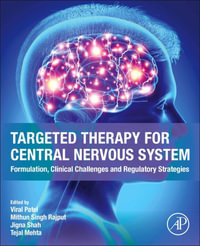| Preface | p. xiii |
| Acknowledgments | p. xvii |
| Authors | p. xix |
| Sustainability Engineering | p. 1 |
| The Concept of Sustainability Engineering | p. 1 |
| The Need for Sustainability Engineering | p. 3 |
| Customer Expectations | p. 4 |
| Market Competition | p. 5 |
| Customer Needs | p. 5 |
| A Methodology for Sustainability Engineering | p. 14 |
| Process Inputs | p. 17 |
| Process Outputs | p. 19 |
| Management Processes | p. 19 |
| Technical Processes | p. 20 |
| Phase Dependency | p. 21 |
| References | p. 23 |
| Structuring a Sustainability Engineering Program | p. 25 |
| Customer Requirements | p. 25 |
| Participants in the Process | p. 30 |
| Senior Management | p. 31 |
| Project Leadership | p. 31 |
| Sustainability Engineer | p. 32 |
| Logistics Engineer | p. 33 |
| Software Engineer | p. 33 |
| Hardware Engineer | p. 34 |
| Test Engineer | p. 34 |
| Measurement Analyst | p. 34 |
| Configuration Manager | p. 34 |
| QA Engineer | p. 35 |
| Specialty Engineer | p. 35 |
| Integrated Product Teams | p. 35 |
| Influences and Factors | p. 36 |
| Enterprise Environment | p. 36 |
| Project Environment | p. 36 |
| Project Support | p. 37 |
| Technical Process Groups | p. 37 |
| External Environment | p. 38 |
| Other Enterprise Projects and Systems | p. 38 |
| Integrate Sustainability into the Project Life Cycle | p. 38 |
| Foundational Concepts in Sustainability Engineering | p. 43 |
| System Concept | p. 43 |
| System Blocks | p. 43 |
| System Elements | p. 45 |
| End-Product Elements | p. 45 |
| Subsystem Elements | p. 46 |
| Enabling-Product Elements | p. 46 |
| System Block Roles | p. 46 |
| WBS | p. 46 |
| Specifications of End Products | p. 50 |
| Defining Interfaces | p. 52 |
| Multidisciplinary Teamwork | p. 52 |
| Recursion and Iteration | p. 53 |
| Assessing Risk | p. 54 |
| Technical Reviews | p. 55 |
| Cost Collection and Reporting | p. 56 |
| System Structure | p. 57 |
| Top-Down Development | p. 57 |
| Bottom-Up Realization | p. 61 |
| Life Cycle Models and Strategies | p. 62 |
| Functions and Characteristics of Life Cycle Models | p. 63 |
| Standard Life Cycle Models | p. 64 |
| Life Cycle Strategies | p. 65 |
| Once-Through (Waterfall) Strategy | p. 65 |
| Vee Strategy | p. 65 |
| Incremental Strategy | p. 67 |
| Spiral Strategy | p. 67 |
| Evolutionary Strategy | p. 69 |
| Selection and Tailoring of Life Cycle Models and Strategies | p. 70 |
| References | p. 71 |
| Sustainability Engineering Methodology | p. 73 |
| Sustainability Engineering Methodology | p. 73 |
| Input | p. 76 |
| Requirements Analysis | p. 76 |
| Requirements Validation | p. 77 |
| Functional Analysis Task | p. 77 |
| Functional Verification Task | p. 81 |
| Synthesis Task | p. 82 |
| Design Verification | p. 85 |
| Systems Analysis and Control | p. 87 |
| Trade-Off Studies | p. 91 |
| System/Cost-Effectiveness Analysis | p. 92 |
| Risk Management | p. 92 |
| Configuration Management | p. 92 |
| Interface Management | p. 93 |
| Data Management | p. 93 |
| Integrated Master Plan | p. 93 |
| Technical Performance Measurement | p. 94 |
| Technical Reviews | p. 94 |
| Output | p. 95 |
| Specifications and Baselines | p. 95 |
| Life Cycle Support Data | p. 96 |
| Concurrency and Integration | p. 96 |
| References | p. 97 |
| Sustainability Engineering Processes | p. 99 |
| Introduction | p. 99 |
| Key Terms and Definitions | p. 102 |
| Provider | p. 102 |
| System | p. 102 |
| Process | p. 102 |
| Integrity | p. 102 |
| Project Framework Processes | p. 102 |
| Solution Design Processes | p. 146 |
| Technical Management Processes | p. 191 |
| Product Realization Processes | p. 253 |
| Product Utilization Processes | p. 297 |
| Tailoring Sustainability Engineering Processes | p. 311 |
| Sustainability Engineering Tasking Document | p. 311 |
| IMP | p. 312 |
| Use of IMP | p. 313 |
| IMP Format | p. 314 |
| IMP Structure | p. 315 |
| Implementation of an IMP | p. 316 |
| IMS | p. 316 |
| TPMs | p. 316 |
| Technical Integration Plans | p. 317 |
| Technical Transition Plans | p. 317 |
| System Configuration | p. 317 |
| Technical Reviews | p. 318 |
| Structuring the Reviews | p. 319 |
| Sustainability Engineers Role in Reviews | p. 321 |
| Major Reviews | p. 322 |
| ASR | p. 322 |
| SRR | p. 323 |
| SFR | p. 323 |
| PDR | p. 324 |
| CDR | p. 325 |
| SVR | p. 326 |
| FCA | p. 327 |
| PCA .327 | |
| Subsystem Reviews | p. 327 |
| Software Specification Review | p. 328 |
| Subsystem PDR | p. 329 |
| Subsystem CDR | p. 329 |
| TRR. | p. 330 |
| Subsystem FCA | p. 330 |
| Subsystem PCA | p. 330 |
| Functional Reviews | p. 330 |
| Support Review | p. 331 |
| Training Review | p. 331 |
| Development Review | p. 331 |
| Verification Review | p. 331 |
| Manufacturing Review | p. 332 |
| Disposal Review | p. 332 |
| Interim System Reviews | p. 332 |
| Functional Tasks | p. 333 |
| Human Factors | p. 333 |
| System Safety and Health Hazards | p. 333 |
| System Security | p. 334 |
| Producibility | p. 334 |
| Integrated Logistics Support | p. 334 |
| Test and Evaluation | p. 334 |
| Integrated Diagnostics | p. 335 |
| Transportability | p. 335 |
| Infrastructure Support | p. 335 |
| System-Cost-Effectiveness Analysis Tasks | p. 335 |
| Manufacturing Analysis and Assessment | p. 336 |
| Verification Analysis and Assessment | p. 336 |
| Deployment Analysis and Assessment | p. 336 |
| Operational Analysis and Assessment | p. 337 |
| Supportability Analysis and Assessment | p. 337 |
| Training Analysis and Assessment | p. 338 |
| Disposal Analysis and Assessment | p. 338 |
| Environmental Analysis and Impact Assessment | p. 338 |
| LCC Analysis and Assessment | p. 338 |
| Project Implementation Tasks | p. 339 |
| Other Pervasive Considerations | p. 339 |
| Computer Hardware | p. 339 |
| Use of Software | p. 339 |
| Decision Database | p. 340 |
| Open System Architectures | p. 340 |
| Prototyping | p. 341 |
| Materials, Processes, and Parts Control | p. 341 |
| Tailoring Process | p. 341 |
| Levels of Tailoring | p. 343 |
| The Tailoring Process | p. 343 |
| Process "Tailoring Traps" | p. 346 |
| Reference | p. 346 |
| Designing for Sustainability | p. 347 |
| Objectives | p. 347 |
| Support Concepts | p. 347 |
| Operational and Support Environment | p. 350 |
| Preventive versus Corrective Maintenance Requirements | p. 350 |
| Two-Level Maintenance | p. 351 |
| Human Engineering | p. 352 |
| Human Factors | p. 352 |
| Tools and Support Equipment | p. 354 |
| Maintenance Training | p. 355 |
| Testability and Diagnostics | p. 357 |
| Testability | p. 357 |
| Diagnostics | p. 367 |
| Interfaces and Connections | p. 368 |
| Safety and Induced Failures | p. 368 |
| Standardization and Interchangeability | p. 376 |
| Design Tools | p. 377 |
| Analytical Tools | p. 377 |
| Mock-ups | p. 379 |
| Simulation and VR | p. 379 |
| Handbooks and Other Reference Documents | p. 382 |
| Artificial Intelligence | p. 382 |
| Expert Systems | p. 382 |
| Neural Networks | p. 386 |
| Design Guidelines | p. 387 |
| References | p. 394 |
| Sustainability Analysis | p. 395 |
| Equipment Downtime Analysis | p. 395 |
| Sustainability Design Analysis | p. 396 |
| FMEA | p. 396 |
| Testability Analysis | p. 397 |
| Objectives of Testing | p. 400 |
| Testing in General | p. 400 |
| Verification, Demonstration, and Evaluation | p. 401 |
| Sustainability Testing: Verification | p. 403 |
| Sustainability Testing: Demonstration | p. 404 |
| Sustainability Testing: Evaluation | p. 417 |
| Dependency Analysis | p. 422 |
| Other Types of Testability Analyses | p. 434 |
| Human Factors Analysis | p. 435 |
| Managing the Analysis | p. 435 |
| Sustainability Test Procedures | p. 437 |
| Maintenance Tasks | p. 437 |
| Administrative Tasks | p. 438 |
| Other Duties | p. 439 |
| Data Collection | p. 439 |
| Parameter Calculations | p. 440 |
| Documentation Tasks | p. 440 |
| Sustainability Demonstrations | p. 440 |
| Defining Needs | p. 441 |
| Using Test Programs to Verify Testability Design Attributes | p. 442 |
| Sustainability Prediction, Allocation, and Assessment | p. 442 |
| Sustainability Prediction | p. 442 |
| Sustainability Allocation | p. 443 |
| FRCM | p. 445 |
| Variation of the FRCM | p. 446 |
| Statistically Based Allocation Method | p. 447 |
| Equal Distribution Method | p. 447 |
| Sustainability Assessment | p. 447 |
| Quantitative Measures of Sustainability | p. 448 |
| Qualitative Measures of Sustainability | p. 451 |
| References | p. 452 |
| Assessing Sustainability Capability Maturity | p. 453 |
| Overview of the Sustainability Maturity Model | p. 453 |
| Purpose and Description of the CMMI Model | p. 454 |
| CMMI Terminology | p. 454 |
| Capability Maturity Levels | p. 455 |
| Capability Level 0: Incomplete Process | p. 460 |
| Capability Level 1: Performed Process | p. 460 |
| Capability Level 2: Managed Process | p. 460 |
| Capability Level 3: Defined Process | p. 460 |
| Capability Level 4: Quantitatively Managed Process | p. 460 |
| Capability Level 5: Optimizing Process | p. 461 |
| Application to IPTs | p. 461 |
| Process Descriptions | p. 462 |
| Engineering Category | p. 462 |
| Requirements Management | p. 462 |
| Requirements Development | p. 463 |
| Technical Solution | p. 465 |
| Product Integration | p. 465 |
| Work Product Verification | p. 468 |
| Work Product Validation | p. 469 |
| Project Management Category | p. 470 |
| Project Planning | p. 471 |
| Project Monitoring and Control | p. 472 |
| Supplier Agreement Management | p. 474 |
| Integrated Project Management | p. 475 |
| Risk Management | p. 476 |
| Quantitative Project Management | p. 478 |
| Support Category | p. 479 |
| Configuration Management | p. 479 |
| Process and Product Quality Assurance | p. 480 |
| Measurement and Analysis | p. 481 |
| Causal Analysis and Resolution | p. 483 |
| Decision Analysis and Resolution | p. 483 |
| Process Management Category | p. 484 |
| Organizational Process Focus | p. 484 |
| Organizational Process Definition | p. 486 |
| Organizational Training | p. 487 |
| Organizational Process Performance | p. 488 |
| Organizational Innovation and Deployment | p. 489 |
| Generic Activities Applicable to All Processes | p. 490 |
| Establish an Organizational Policy | p. 490 |
| Plan Development, Deployment, Use, and Improvement of the Process | p. 490 |
| Provide Resources for Management of the Process | p. 491 |
| Assign Responsibility for Maintenance of the Process | p. 491 |
| Train People | p. 491 |
| Manage Configurations | p. 491 |
| Identify and Involve Relevant Stakeholders | p. 491 |
| Monitor and Control the Process | p. 491 |
| Objectively Evaluate Adherence to the Policy for Using the Process | p. 491 |
| Review the Status of Process Adherence with Higher-Level Management | p. 492 |
| References | p. 492 |
| Index | p. 493 |
| Table of Contents provided by Ingram. All Rights Reserved. |
























